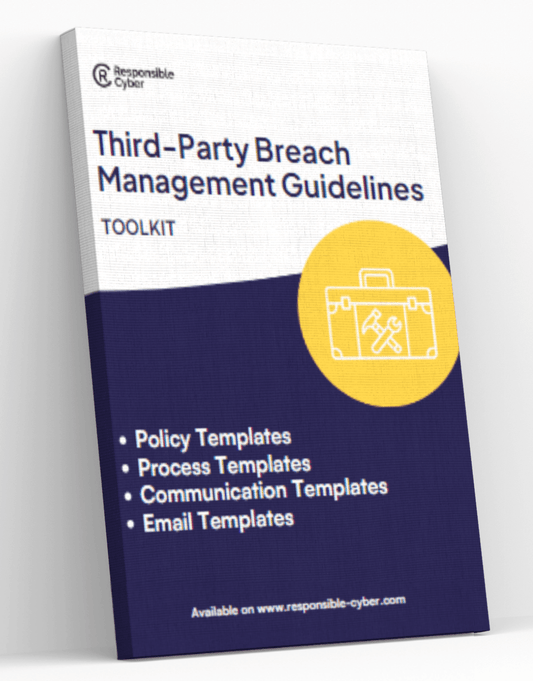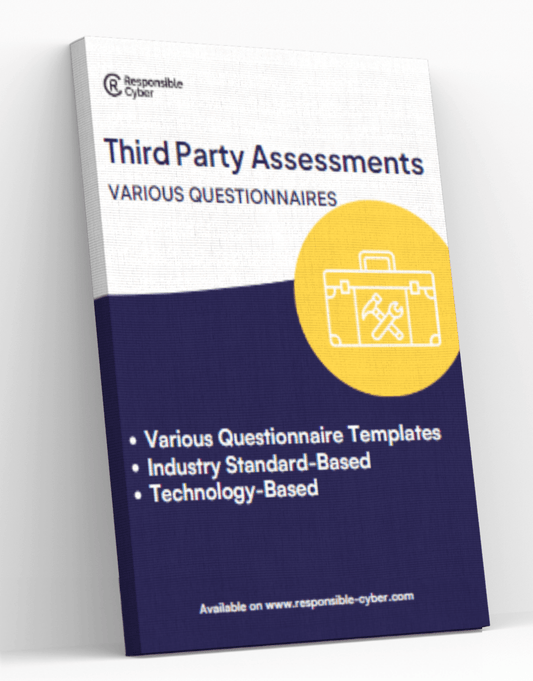Comprehensive Guide to Third-Party Risk Management Certifications: Enhancing Security and Compliance

In the modern business landscape, third-party relationships are integral to the operational success of organizations. However, these relationships also introduce various risks, including data breaches, compliance violations, and operational disruptions. To manage these risks effectively, organizations can pursue third-party risk management certifications. These certifications provide a structured approach to identifying, assessing, and mitigating risks associated with third-party vendors and service providers. This comprehensive guide explores key third-party risk management certifications, their benefits, and the steps to achieve them.
Understanding Third-Party Risk Management (TPRM)
Third-Party Risk Management (TPRM) involves evaluating and mitigating risks arising from external entities that provide goods or services to an organization. Effective TPRM helps organizations protect sensitive data, ensure regulatory compliance, and maintain business continuity. Certifications in TPRM validate an organization’s commitment to these practices, enhancing its reputation and operational security.
Key Third-Party Risk Management Certifications
1. Certified Third-Party Risk Professional (CTPRP)
The CTPRP certification, offered by the Shared Assessments Program, is designed for professionals responsible for managing third-party risk. It validates expertise in assessing, managing, and mitigating risks associated with third-party relationships.
Key Components:
- Risk Identification and Assessment: Techniques for identifying and assessing third-party risks.
- Risk Mitigation Strategies: Methods for mitigating identified risks.
- Ongoing Monitoring: Processes for continuous monitoring of third-party performance.
Benefits:
- Enhanced Expertise: Validates the knowledge and skills necessary for effective third-party risk management.
- Professional Recognition: Enhances career prospects and professional credibility.
- Improved Risk Management: Equips professionals with tools and techniques to manage third-party risks effectively.
2. Certified Information Systems Auditor (CISA)
The CISA certification, offered by ISACA, is widely recognized in the field of information systems auditing, control, and security. While not specific to TPRM, it covers critical aspects of risk management relevant to third-party relationships.
Key Components:
- Audit Processes: Comprehensive understanding of audit processes and methodologies.
- Risk Management: Techniques for identifying, assessing, and managing risks.
- Control Design and Implementation: Knowledge of designing and implementing effective controls.
Benefits:
- Global Recognition: Recognized worldwide as a leading certification in IT audit and security.
- Holistic Approach: Covers a broad range of risk management topics, including third-party risk.
- Enhanced Audit Skills: Improves skills in auditing and managing information systems.
3. Certified in Risk and Information Systems Control (CRISC)
The CRISC certification, also offered by ISACA, focuses on enterprise IT risk management. It is particularly relevant for professionals involved in managing third-party risks.
Key Components:
- Risk Identification: Techniques for identifying IT and business risks.
- Risk Assessment: Methods for assessing the impact of risks.
- Risk Response and Mitigation: Strategies for responding to and mitigating risks.
Benefits:
- Specialized Knowledge: Provides specialized knowledge in risk management and control.
- Professional Credibility: Enhances credibility and career prospects in risk management.
- Comprehensive Risk Management: Equips professionals with the skills to manage a wide range of risks.
4. ISO 27001 Lead Implementer
The ISO 27001 Lead Implementer certification focuses on implementing an Information Security Management System (ISMS) based on the ISO 27001 standard. This certification is crucial for managing third-party risks related to information security.
Key Components:
- ISMS Implementation: Techniques for implementing and managing an ISMS.
- Risk Assessment: Methods for identifying and assessing information security risks.
- Compliance: Ensuring compliance with ISO 27001 standards.
Benefits:
- International Recognition: Recognized globally as a leading certification in information security management.
- Comprehensive Security Management: Provides comprehensive knowledge of managing information security risks, including those associated with third parties.
- Enhanced Compliance: Ensures compliance with international information security standards.
5. Third-Party Risk Management Professional (TPRM-P)
The TPRM-P certification, offered by the Risk Management Association (RMA), focuses on managing risks associated with third-party relationships. It is designed for professionals responsible for overseeing third-party risk management programs.
Key Components:
- Risk Frameworks: Understanding of third-party risk management frameworks.
- Risk Assessment and Mitigation: Techniques for assessing and mitigating third-party risks.
- Monitoring and Reporting: Processes for monitoring third-party performance and reporting risks.
Benefits:
- Targeted Expertise: Provides specialized knowledge in third-party risk management.
- Professional Recognition: Enhances professional credibility and career opportunities.
- Improved Risk Management: Equips professionals with the skills to effectively manage third-party risks.
Benefits of Third-Party Risk Management Certifications
1. Enhanced Security Posture
Third-party risk management certifications validate an organization’s commitment to robust security practices. They ensure that professionals are equipped with the knowledge and skills necessary to protect sensitive data and manage risks effectively.
2. Improved Compliance
Certifications help organizations ensure compliance with relevant regulations and industry standards. This reduces the risk of legal penalties and enhances the organization’s reputation.
3. Increased Operational Resilience
Effective third-party risk management enhances an organization’s ability to withstand and recover from disruptions caused by third-party failures. Certifications provide the tools and techniques necessary for proactive risk management and business continuity.
4. Professional Development
Certifications enhance the knowledge and skills of professionals responsible for third-party risk management. They provide career advancement opportunities and professional recognition in the field.
5. Stronger Vendor Relationships
Certifications promote best practices in vendor management, fostering stronger, more transparent relationships with third-party vendors. This leads to improved collaboration and performance.
Steps to Achieve Third-Party Risk Management Certifications
1. Choose the Right Certification
Select a certification that aligns with your career goals and the specific needs of your organization. Consider factors such as the certification’s relevance, recognition, and the skills it provides.
2. Prepare and Study
Invest time in preparing for the certification exam. Use study materials, attend training sessions, and participate in study groups to enhance your understanding of the certification topics.
3. Gain Practical Experience
Apply the knowledge and skills learned during your preparation in real-world scenarios. Practical experience is essential for understanding the complexities of third-party risk management.
4. Take the Exam
Schedule and take the certification exam. Ensure you understand the exam format and requirements. Practice with sample questions and exams to build confidence.
5. Maintain Certification
Many certifications require continuing education and periodic renewal. Stay current with industry trends and advancements by participating in professional development activities and earning continuing education credits.
Conclusion
Third-party risk management certifications are essential for organizations seeking to enhance their security posture, ensure compliance, and manage third-party risks effectively. By validating the knowledge and skills of professionals responsible for TPRM, these certifications provide numerous benefits, including improved risk management, increased operational resilience, and stronger vendor relationships.
Implementing a robust third-party risk management program and achieving relevant certifications is a strategic investment in an organization’s long-term success. As the digital landscape continues to evolve, the importance of effective third-party risk management will only grow. Organizations that proactively manage these risks and invest in professional certifications will be better positioned to navigate the complexities of the modern business environment and achieve sustained success.
Visit RiskImmune website to discover more: www.riskimmune.com







